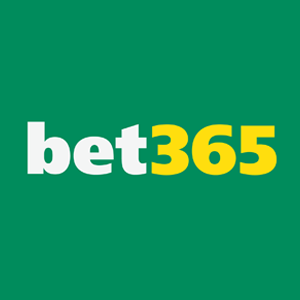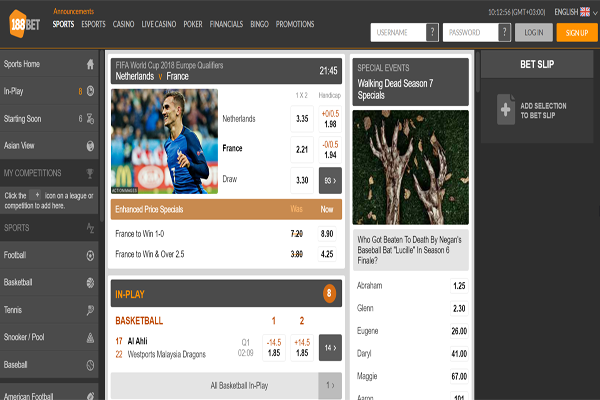What Is Up-And-Down Bet? Betting Types Explained
The world of betting unfolds with intricate strategies, and the Up-and-Down bet stands out as a dynamic approach. In this article, we delve into the nuances of this betting style, exploring its mechanics, calculation methods, and practical examples. Discover how this strategy intertwines two selections, offering a structured yet adaptable pathway to potentially maximize returns in your wagering endeavors.
1. What Is a up and Down Bet?
An Up-and-Down bet, often termed a "double stakes about" bet, involves a specific approach to betting on two selections. This method comprises two separate bets, each interconnected and conditional upon the success of the preceding one.
The Up-and-Down bet operates on an 'any-to-come if-cash' principle, meaning that the second part of the bet only proceeds if there's sufficient cash remaining from the first part.
Bet 1:
- Part 1: The bettor places a wager on Selection 1.
- Part 2: If there's enough cash left from Part 1's winnings or stake, the second part involves betting on Selection 2.
Bet 2:
- Part 1: A bet on Selection 2 follows, conditional on having sufficient funds from the success of Part 1.
- Part 2: If enough cash remains from Part 1 of Bet 2, the bettor places a wager on Selection 1.
The key principle behind the Up-and-Down bet lies in its interdependent nature. The success of the initial bet's outcome determines whether the subsequent bet will occur. It's essentially a paired bet structure where the potential proceeds or remaining funds from one part influence the continuation of the next wager.
Advantages:
- Potential Profits: If both selections win, the returns can be substantial.
- Controlled Risk: Funds from the first part of the bet influence subsequent wagers, allowing for a more controlled approach to betting.
Disadvantages:
- Conditional Success: Success is heavily reliant on the outcomes of the initial bets.
- Higher Stakes: It involves investing in two bets simultaneously, requiring a larger initial stake.
The Up-and-Down bet suits bettors seeking a linked, conditional betting strategy. It's for those who have confidence in the selections but also acknowledge the interconnected risk involved. This type of bet is favorable when there's a belief in the potential success of both selections and a desire to maximize potential returns.
2. Types of Up-and-Down Bets
In Up-and-Down betting, two primary styles differ in how the stake for "Part 2" of each bet is determined:
2.1. Single Stake About (SSA)
In Single Stake About, the stake for the second part of the bet matches the original stake, provided there is enough remaining cash. If the remaining funds are insufficient, the remaining amount is used as the stake for Part 2.
2.2. Double Stakes About (DSA)
With Double Stakes About, if there are ample winnings from "Part 1," the stake for "Part 2" will be twice the original stake. However, the full double stake might not be available if the odds of "Part 1" are evens or lower. In such cases, the remaining funds are utilized for "Part 2" betting.
These two styles of Up-and-Down bets determine how the stake for the second part of the bet is calculated, offering variations in betting strategies and the potential amounts staked for subsequent wagers based on the outcome of the initial bet.
3. Example of Up-and-Down Bet
Imagine you have $20 and are interested in betting on two different tennis matches, each player at odds of 3/1.
1 - Single Stake About (SSA) Example:
Part 1:
- Bet on Player A: Wager $10 on Player A at 3/1 odds.
- Return: $40 ($30 profit + $10 stake)
- If Player A wins: Keep the $30 profit and use the original $10 stake to bet on Player B.
Part 2:
- Bet on Player B: Use the $10 stake on Player B at 3/1 odds.
- Return: $40 ($30 profit + $10 stake)
- If Player B wins: Total profit from both parts: $60
2 - Double Stakes About (DSA) Example:
Part 1:
- Bet on Player A: Wager $10 on Player A at 3/1 odds.
- Return: $40 ($30 profit + $10 stake)
- If Player A wins: Keep $20 of the profit and double the original stake to $20 on Player B.
Part 2:
- Bet on Player B: Use the $20 stake on Player B at 3/1 odds.
- Return: $80 ($60 profit + $20 stake)
- If Player B wins: Total profit from both parts: $80
This example demonstrates how utilizing the Up-and-Down bet strategy with different stake approaches (SSA and DSA) can potentially increase profits compared to separate individual bets on two different outcomes.
Calculating an Up-and-Down bet involves understanding the conditional nature of the wager and determining potential outcomes based on the bet's structure.
4. How to Calculate Up-and-Down Bets
Calculating an Up-and-Down bet involves understanding the conditional nature of the wager and determining potential outcomes based on the bet's structure.
4.1. Single Stake About (SSA)
Initial Bet (Part 1): Place a stake on Selection 1.
Determine the potential return: Stake x Odds = Return from Part 1.
Continuation Bet (Part 2): If sufficient funds remain from Part 1, place the remaining stake on Selection 2.
Calculate the potential return: Remaining Stake x Odds = Return from Part 2.
4.2. Double Stakes About (DSA)
Initial Bet (Part 1): Place a stake on Selection 1.
Calculate the potential return: Stake x Odds = Return from Part 1.
Continuation Bet (Part 2): If there are ample winnings from Part 1, double the original stake for Selection 2.
Determine the potential return: Double Stake x Odds = Return from Part 2.
Example Calculation:
Suppose you have $20 and want to bet on two different horses, each at odds of 4/1.
Single Stake About (SSA) Calculation:
Part 1:
- Bet $10 on Horse A at 4/1.
- Potential Return: $10 x 4 = $40 from Part 1.
Part 2:
- If Horse A wins and there's $40 remaining, bet the $40 on Horse B at 4/1.
- Potential Return: $40 x 4 = $160 from Part 2.
Double Stakes About (DSA) Calculation:
Part 1:
- Bet $10 on Horse A at 4/1.
- Potential Return: $10 x 4 = $40 from Part 1.
Part 2:
- If Horse A wins and you have $30 remaining, double the stake to $20 for Horse B at 4/1.
- Potential Return: $20 x 4 = $80 from Part 2.
If you're looking to easily calculate potential profits for Up-and-Down bets, utilizing Up-and-Down bet calculator can simplify the process significantly. Consider using Betmentor's free bet calculators, which offer tools specifically designed to assist in computing potential returns for various betting strategies, including Up-and-Down bets.
The Up-and-Down bet unveils a dynamic way to approach wagering, intertwining two selections for potential profit. Understanding Single Stake About (SSA) and Double Stakes About (DSA) empowers bettors to maximize returns. With practical examples and bet calculators like those from Betmentor, this strategy offers a structured yet flexible approach for informed and efficient betting.














.jpg)





